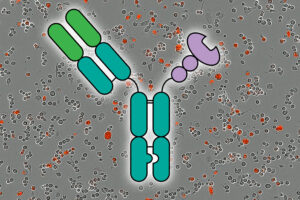
Bellaterra. Fotos entrevista a investigador del Departament de Genètica i de Microbiologia de la UAB Jaime Martínez-Urtaza que ha participat en un informe presitigiós sonbre el canvi climàtic
In a groundbreaking study published in Nature Ecology & Evolution, researchers have unveiled a surprising mechanism of bacterial adaptation: gene loss. This discovery, involving UAB Professor Jaime Martínez Urtaza, reveals that shedding genes, rather than acquiring them, can enhance the adaptability of ocean-dwelling bacteria responsible for severe infectious disease outbreaks globally.
The research, a collaborative effort led by Jaime Martínez Urtaza from the Universitat Autònoma de Barcelona (UAB), alongside Yang Chao and Falush Daniel from the Shanghai Institute of Immunity and Infection, and Wang Hui from Shanghai Jiao Tong University, challenges conventional evolutionary theories. Traditionally, evolution is associated with organisms gaining new genes or mutations to adapt, such as developing resistance or new behaviors. However, this study highlights a lesser-known evolutionary strategy: gene loss.
The Case of Vibrio parahaemolyticus
The focus of the study is Vibrio parahaemolyticus, a bacterium notorious for seafood-related infections worldwide. These infections are primarily linked to foodborne diseases and occur when seawater contacts open wounds. The researchers concentrated on a pandemic clone of the bacterium, which comprises several subtypes or strains. This clone, first detected in Japan in 1996, has since caused significant outbreaks in Asia, the west coast of the USA, and Latin American countries like Chile, Peru, and Mexico. In Spain, it was first identified in 2004, causing an outbreak in Galicia that affected eighty people.
As the team studied the pathogen’s evolution, they observed that different bacterial subtypes replaced each other over time, akin to the succession of COVID-19 variants. Eventually, a dominant type, dubbed Wave-4, emerged as the primary cause of human infections. The researchers discovered that the competitive edge of Wave-4 was not due to a new gene or mutation but rather the loss of specific genes.
How Gene Loss Facilitates Bacterial Success
The genes lost by Wave-4 are associated with the utilization of putrescine, a molecule found in the environment and the human gut. Without these genes, the bacteria gained advantages in two critical areas. Firstly, in environmental survival, as it could form more resilient biofilms, protecting the bacteria from stress and aiding in adherence to surfaces. This capability allows it to endure long journeys across the globe. Secondly, in human transmission, the bacteria could adhere more easily to human cells and colonize the gut more effectively.
Interestingly, gene loss also results in less virulent bacterial infections. This supports the virulence trade-off hypothesis, which suggests that highly virulent pathogens may kill their hosts too quickly, hindering their spread. In contrast, pathogens that strike a balance between virulence and transmission, like the seasonal flu, can become more successful over time. This trade-off might explain the dominance of Wave-4.
A Broader Evolutionary Strategy
The study also identified similar gene loss patterns in other bacterial species, such as Vibrio cholerae and Escherichia coli, which also resulted in stronger biofilms and increased cell adhesion. This suggests a case of convergent evolution, where different organisms independently develop similar traits due to facing similar challenges. According to the scientists, gene loss could be a common and powerful mechanism for bacterial adaptation.
“For a long time, gene loss was seen as a kind of biological decay,” says Yang Chao. “But our study shows it can be just the opposite—a smart evolutionary move. In our model species, it wasn’t mutation or gene gain that made the pathogen more successful—it was losing the right genes at the right time.”
Solving a 30-Year Enigma
The findings illuminate a mystery that has puzzled scientists for three decades concerning the global expansion of V. parahaemolyticus. This breakthrough was made possible by the vast amount of genomic data available today. The researchers analyzed large-scale genomic data from around the world, encompassing 8,600 genomes from six continents and 34 countries.
The study provides “the most complete genomic view of the origin and evolution of the pandemic clone V. parahaemolyticus and allows inferring the history of its geographic transmission,” says UAB Professor Jaime Martínez Urtaza. A future study aims to uncover further insights into how these pathogens traverse continents via oceans.
Article: Chao Yang et al. Wave succession in the pandemic clone of Vibrio parahaemolyticus driven by gene loss Nature Ecology & Evolution (2025). DOI: 10.1038/s41559-025-02827-z






